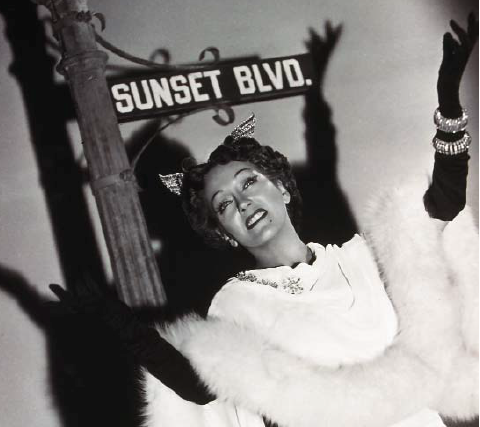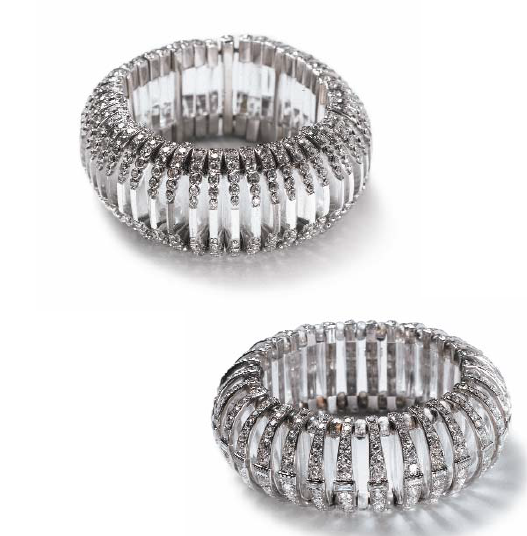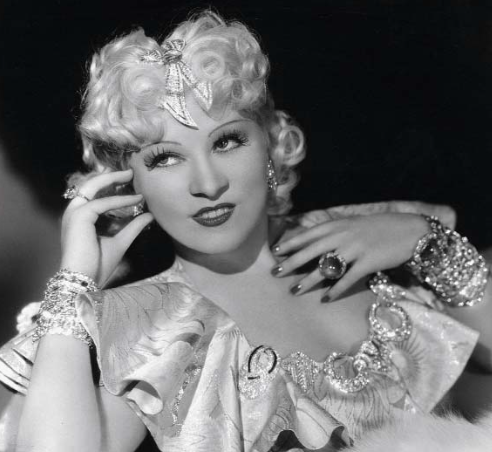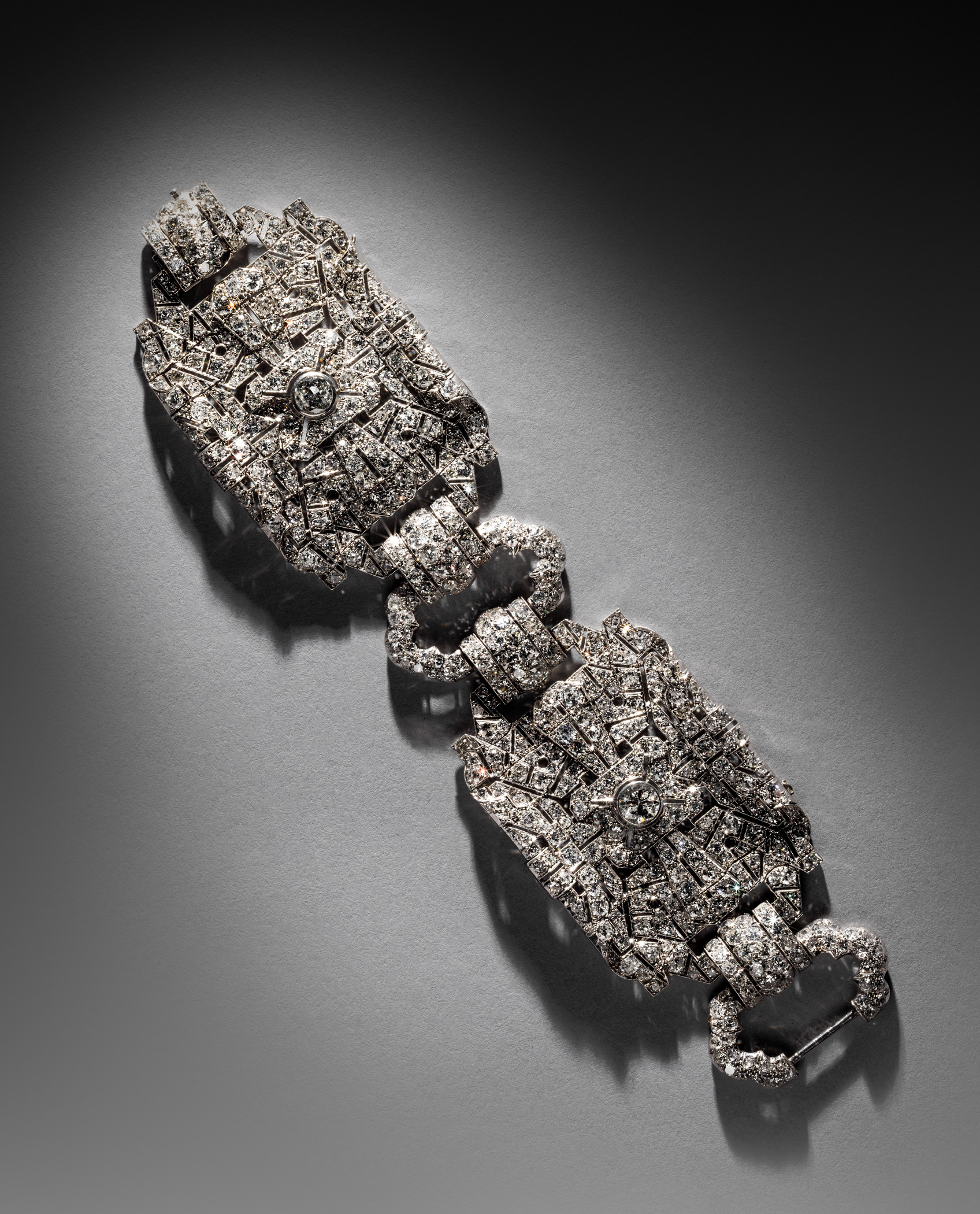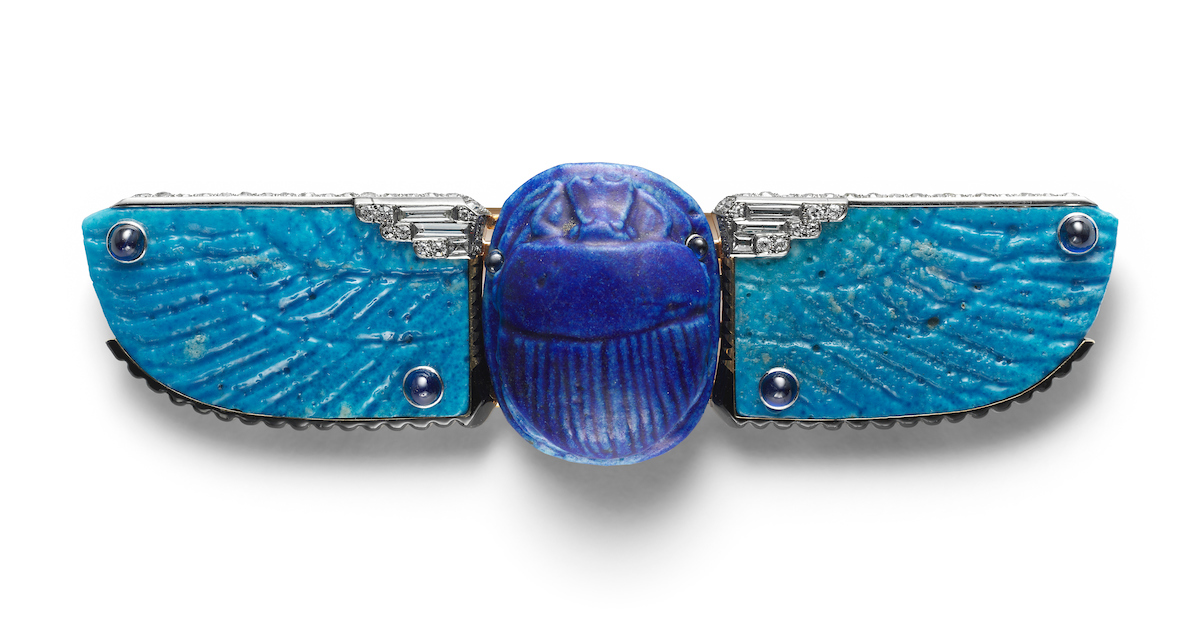Jewelry of The Jazz Age set the tone of a new exhibit at Cooper Hewitt Museum
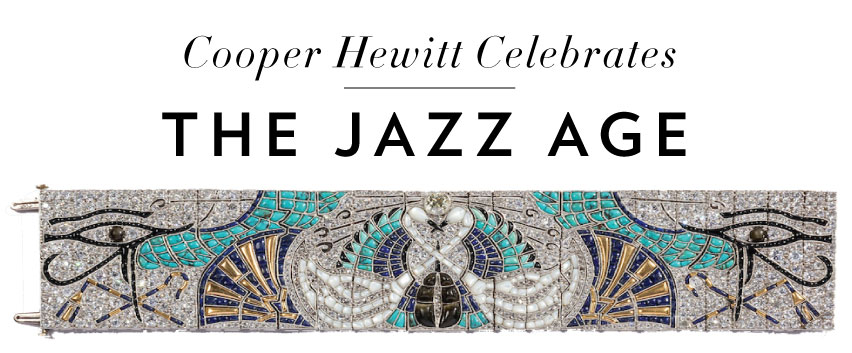
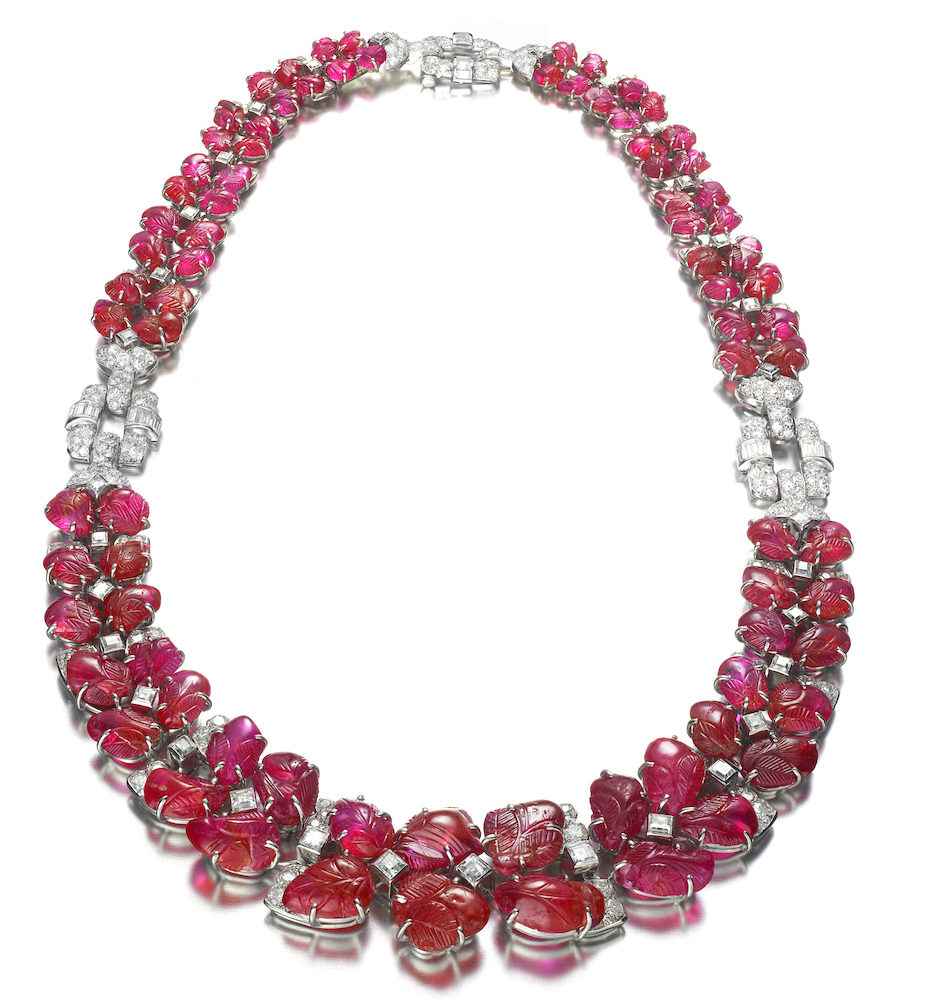
Necklace, 1929; Produced by Van Cleef & Arpels, Platinum, carved rubies, diamonds;The Adrien Labi Collection; Photo: Siegelson, New York
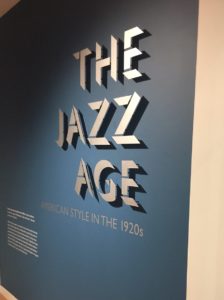
Cooper Hewit’s “The Jazz Age: American Style In The 1920s Exhibit Entrance
The Jazz Age was a time of change in all aspects of design, technology, and the way women thought and dressed. Experimentation and the pulse of a new modernity was captured in both America and Europe. The Jazz Age also represented freedom from the constraints of past decades’ clothing and jewelry. Not only did women gain the right to vote, they hiked up their skirts to shimmy the night away, bejeweled and bedazzled in pieces that broke rules and pushed he boundaries of convention. This ode to new innovation and a new way of life is captured in the exhibit, The Jazz Age: American Style In The 1920s which opens today on April 7tth and runs August 20th, 2017 at the Cooper Hewitt in NYC and then goes onto The Cleveland Museum of Art, from September 20, 2017 through January 14, 2018.
The exhibit is a comprehensive multi-dimensional view of American style during this decade. But, of course, what kept me glued to the cases during the press preview was the Art Deco jewelry, from pieces worn by film stars of the time period to the various styles and techniques that defined a movement in history.
When I asked Stephen Harrison co-organizer of the event and curator of decorative art and design at the Clevland museum if the opening of this exhibit coincided with anything happening in today’s society, he offered, “We are in a similar time of change—of rebellion in all areas of life.” He continues, “speaking specifically about the jewelry, we are seeing a lot more color today as we did back then. Not just large stones, but a definitive movement toward color as a part of the composition of the jewelry—intergrated into the motifs.”
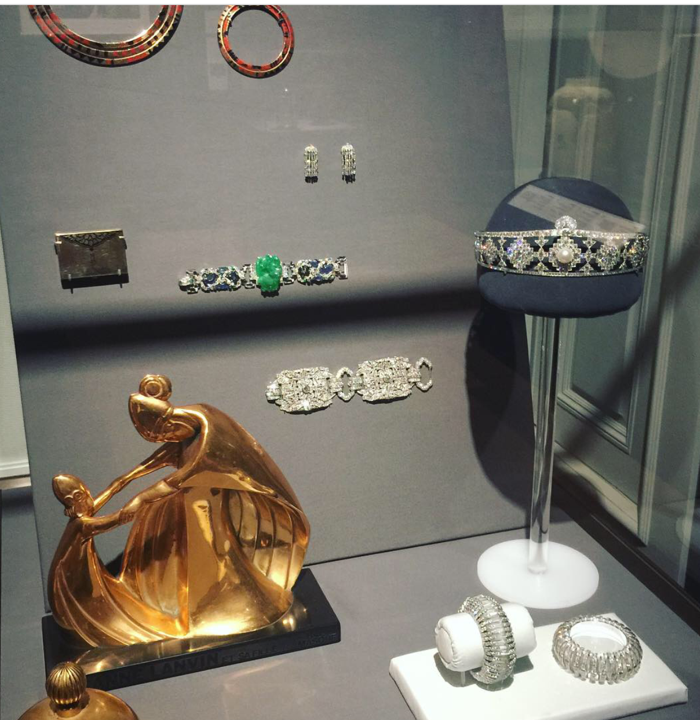
A case from the exhibit “The Jazz Age: American Style In The 1920s. The case features a Cartier bandeau of 1924 which was worn by both Doris Duke and her mother as well as the Neil Lane owned Mae West wide diamond bracelet and the two Cartier Gloria Swanson bracelets among other pieces.
Harrison also mentions the one-of-kind pieces and melding of inflences that we saw then and are also seeing today.
The exhibit was eye opening in that we often see the mixing of cultures when we look at jewelry of The Jazz Age —but we don’t always compare it to whats going on in the current jewelry market. Back then was a definitive blending of Eastern and Western influences, particularly during the later part of the Art Deco movement. Jewelry featured inspirations coming from all parts of Asia and Egypt in color, carved gemstone and dynamic style. This is also similar in the way jewelers work today—it’s not one inspiration or another but a potpourri that might blend masterfully in creating one design.
A few of these pieces that capture this feeling is a bracelet by Lacloche Frères of approximately 1925 which features Egyptian motifs and color—inspired by the excavation of King Tut’s tomb in 1922, which provided sources of motifs and the renewed popularity of certain gemstones.

Egyptian Bracelet, ca. 1925; Produced by Lacloche (Paris, France); Photo: Matt Flynn © Smithsonian Institution
Cartier’s iconic Tutti Fruitti pieces and big juicy carved jadeite and other gemstones set into bracelets and necklaces with Indian inspirations were also major influences of the time.
Harrison cites today’s Hollywood actresses as having a major impact on what women want to wear. “The stars of the golden era of Hollywood perhaps lent even more cache and influence when they owned and wore their own pieces on and off screen.” he says. There is quite a number of pieces throughout the exhibit from the actresses of the time period such as Gloria Swanson’s rock crystal Cartier bracelets which she wore in everyday life and in the film Sunset Boulevard. There is also the wide glittery diamond Mae West bracelet that was purchased by Neil Lane for his personal collection. Previously he had lent it to the film the 2002 Chicago for Catherine Zeta-Jones’ on screen character, Velma. Another piece from Neil Lane’s collection is a platinum, diamond and ruby bracelet, attributed to Mauboussin, circa 1920s. Formerly owned by Zsa Zsa Gabor.
- Gloria Swanson in Sunset Boulevard. Photo courtesy of Rex/Shutterstock.
- Gloria Swanson’s Cartier Diamond and Rock Crystal Bracelets, photo courtesy ©Cartier
.
- Mae West wearing her diamond bracelets. Photo courtesy of Rex/Shutterstock
- From Neil Lane’s private collection, the wide diamond Mae West bracelet, circa 1920s

From Neil Lane’s private collection, Platinum diamond and ruby bracelet. French platinum attributed to Mauboussin. Circa 1920s. Formerly owned by Zsa Zsa Gabor.
Neil Lane, jeweler to the stars and luminary in his own right, curated and lent many pieces from his legendary and historical private collection for the exhibit. As a young art student he left the US for Paris and there he found his passion—seeking out and finding rare pieces. As time went on, he hand selected a roster of the jewelers of the day and pieces from each house which are not only representative, but jaw dropping. Among those in the exhibit-—in addition to the Mae West and Zsa Gabor bracelet:
-An Art Deco brooch exhibited at the 1925 Paris exhibition in platinum, carved lapis onyx coral and jade and diamonds. French, signed Boucheron Paris
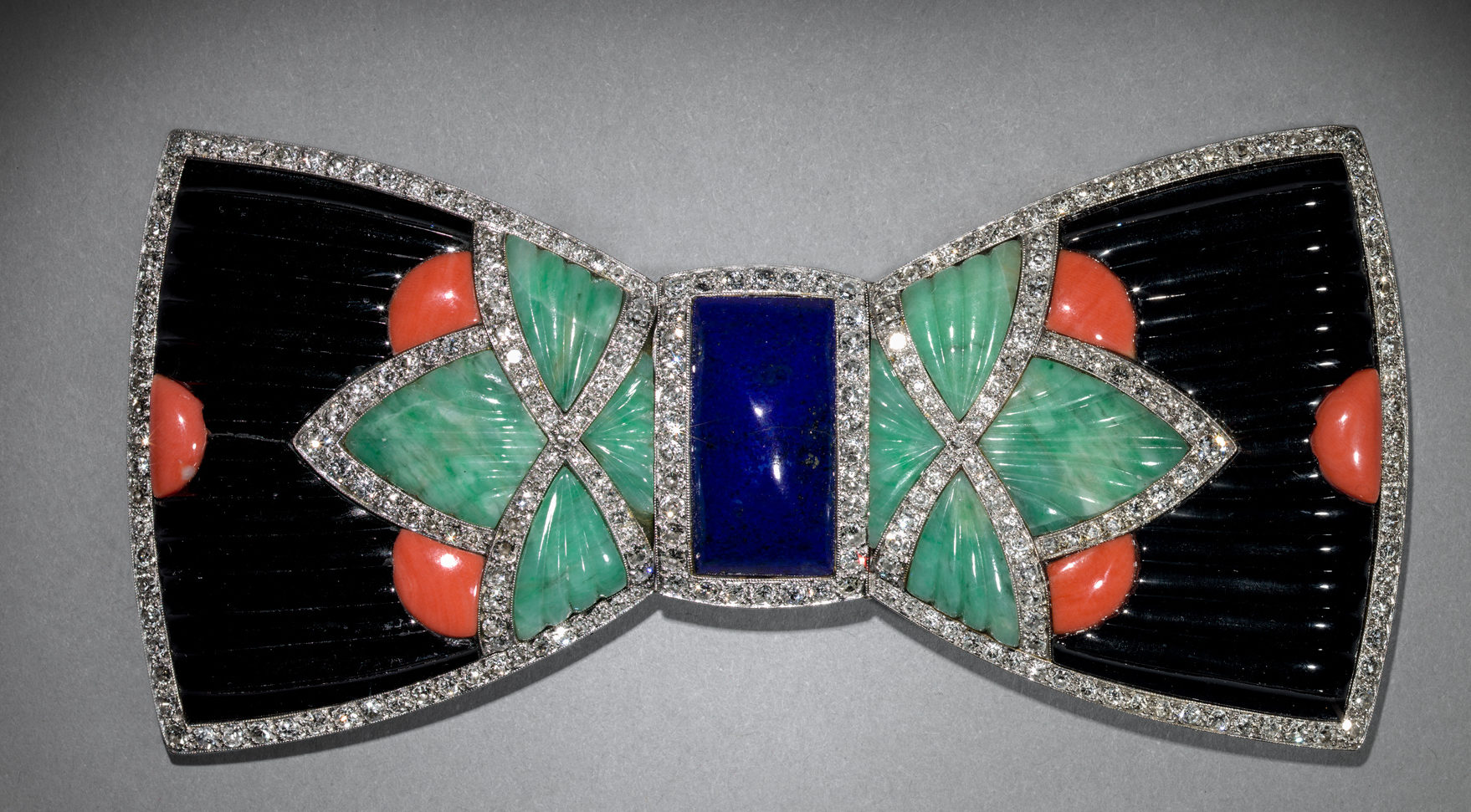
A diamond platinum and carved rock crystal sautoir. Signed Chaumet et cie Paris France. French with platinum hallmarks, circa 1920s. This piece was worn by Jennifer Lawrence to the 86th Academy Awards
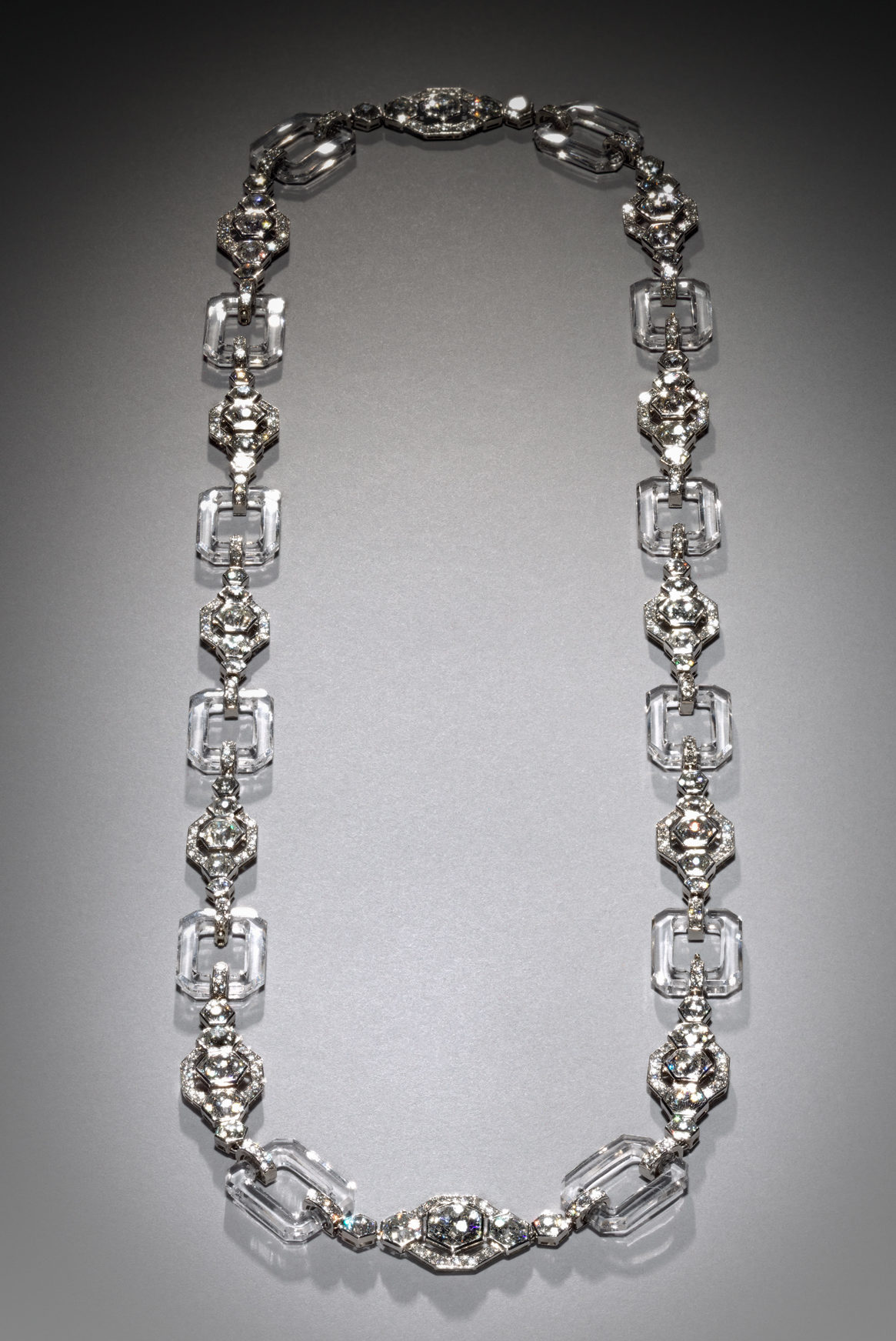
From the royal family Montino Bourbon Del Monte Di San Faustino, A Louis Comfort Tiffany for Tiffany & Co. 18K gold, cabochon sapphire, demantoid garnet suite of faceted sapphires and enamel pendant necklace and matching earrings. Necklace and earrings signed Tiffany & Co. American, circa 1920s
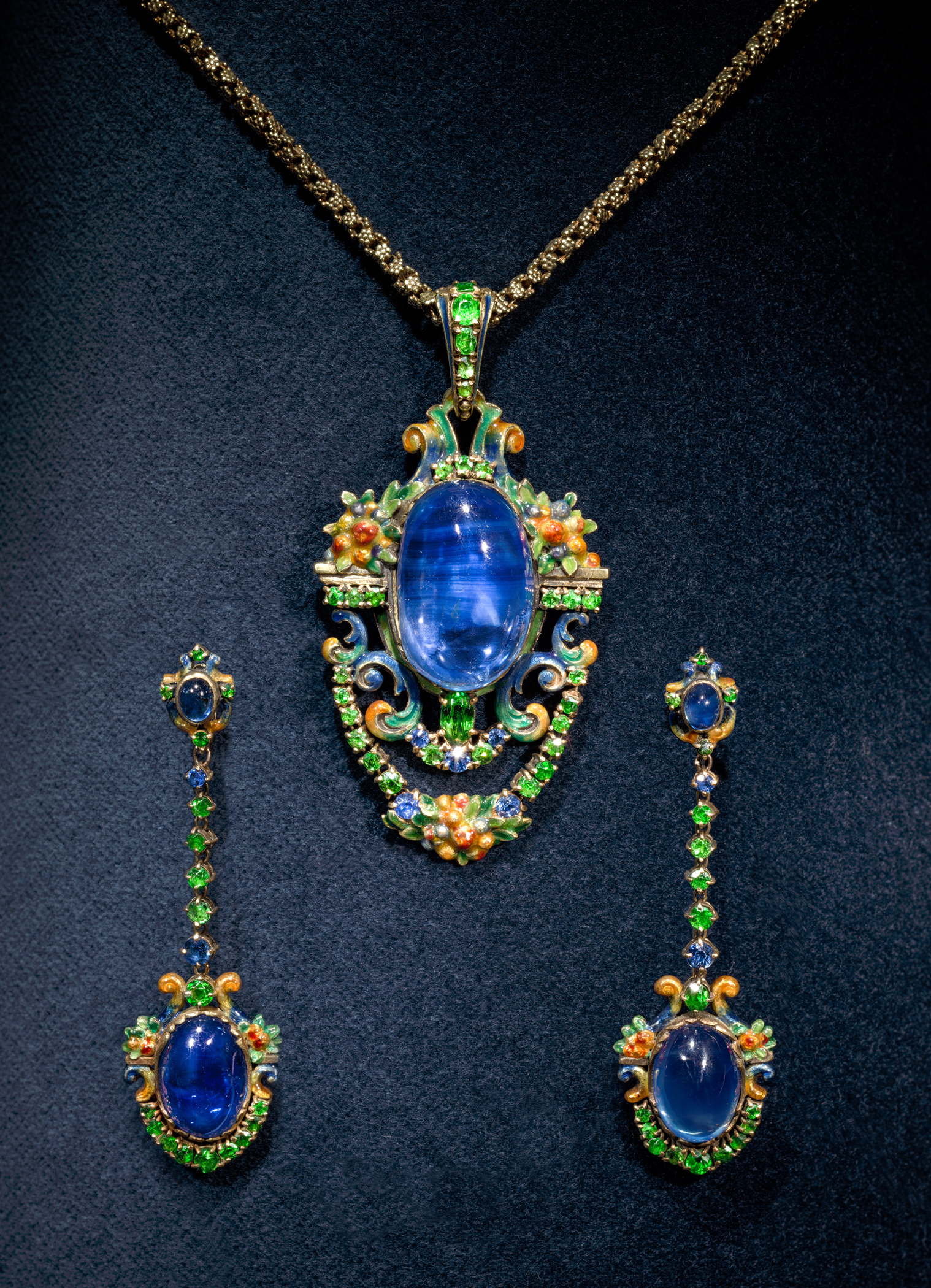
Platinum diamond airplane brooches signed Cartier, circa 1930s
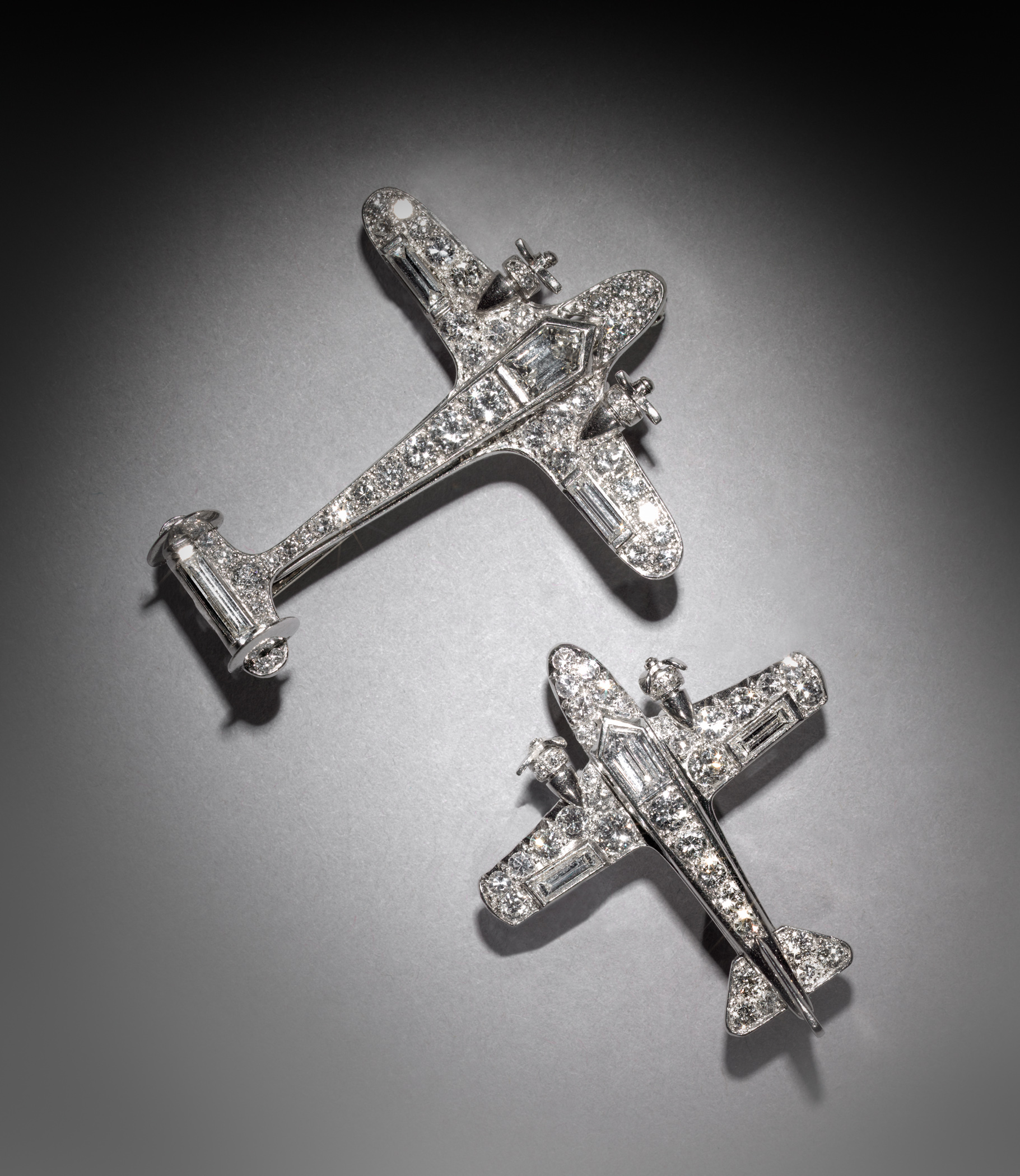
Platinum diamond brooch, signed Raymond Templier. Paris, France, circa 1935. This is just one of the jewels that illustrate the earlier master of geometry in this diamond and platimum work by one of the leaders of the Art Deco movement in jewelry, Raymond Templier
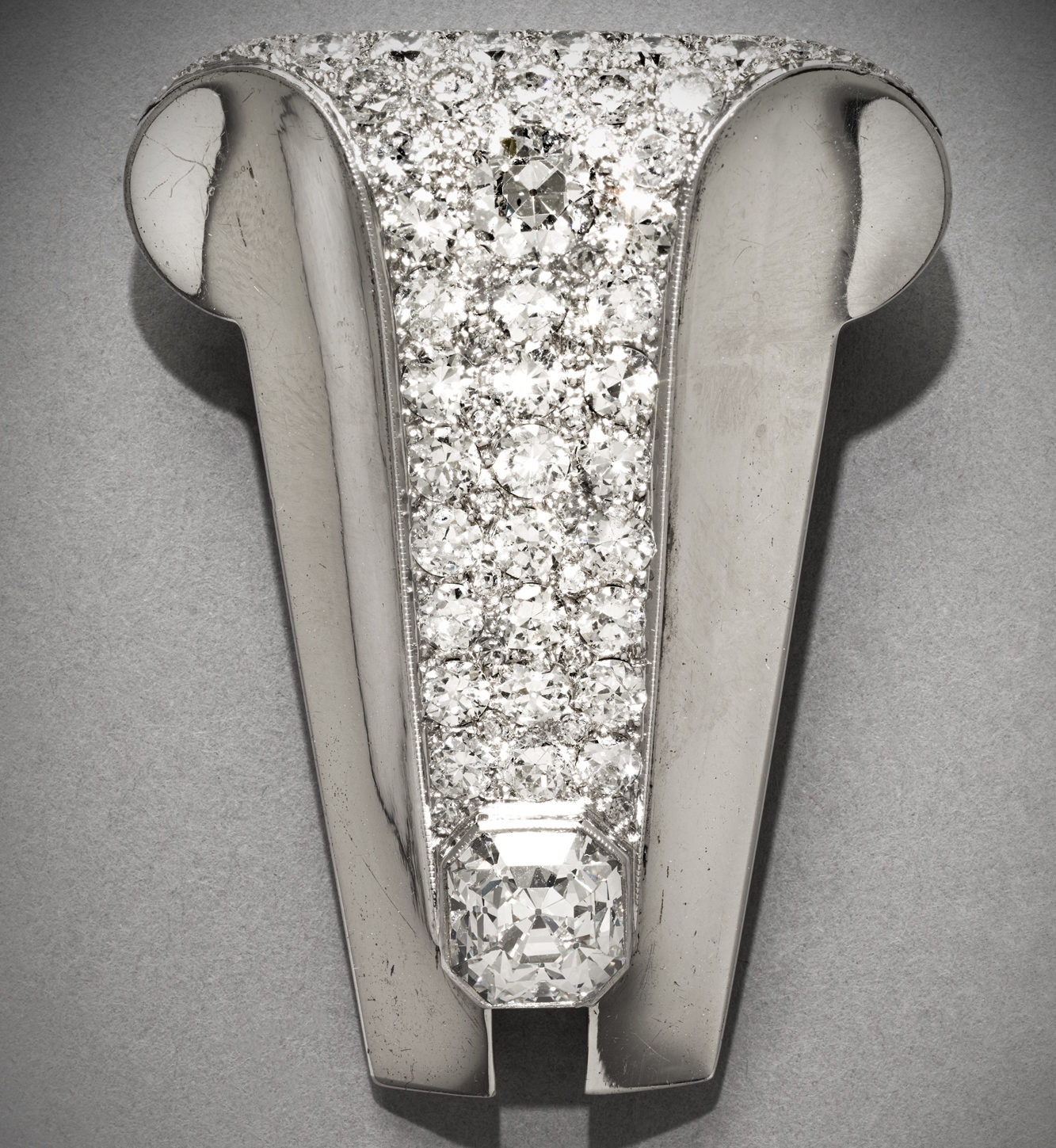
Platinum diamond and ruby bead bracelet by Oscar Heyman, New York, circa 1920
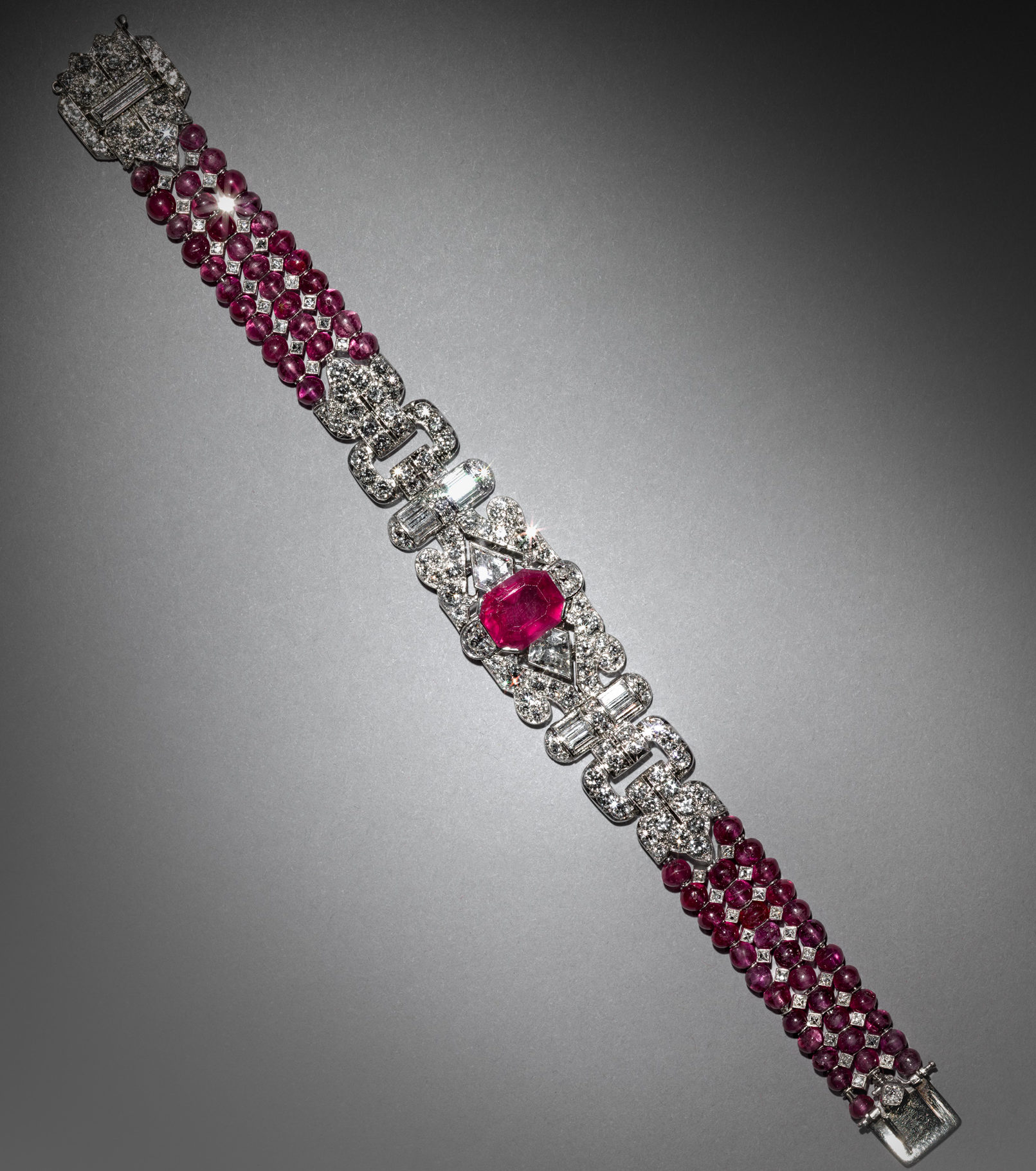
Although Lane’s pieces are exquisite, have provenance and are artfully chosen, there is more, much more in this exhibit that will definitely lure me back many times before it leaves NYC.
Sarah Coffin, the curator and had of product design and decorative arts at Cooper Hewitt, co-organized this exceptional event with Harrison which evokes the modernity of all of the decorative and functional arts as well as brings back the speakeasies and certain iconic figures in jazz music such as Louis Armstrong and Josephine Baker.
Some of the famed pieces by renowned houses on view in the exhibit include the Cartier bandeau of 1924 that both Tobacco heiress Doris Duke and her mother Nanaline both wore at different times. The geometric shapes which echoed other decorative object of Duke’s collection, updated the traditional tiara to highlight the free-spirited mood of hairstyles and fashion of the time.
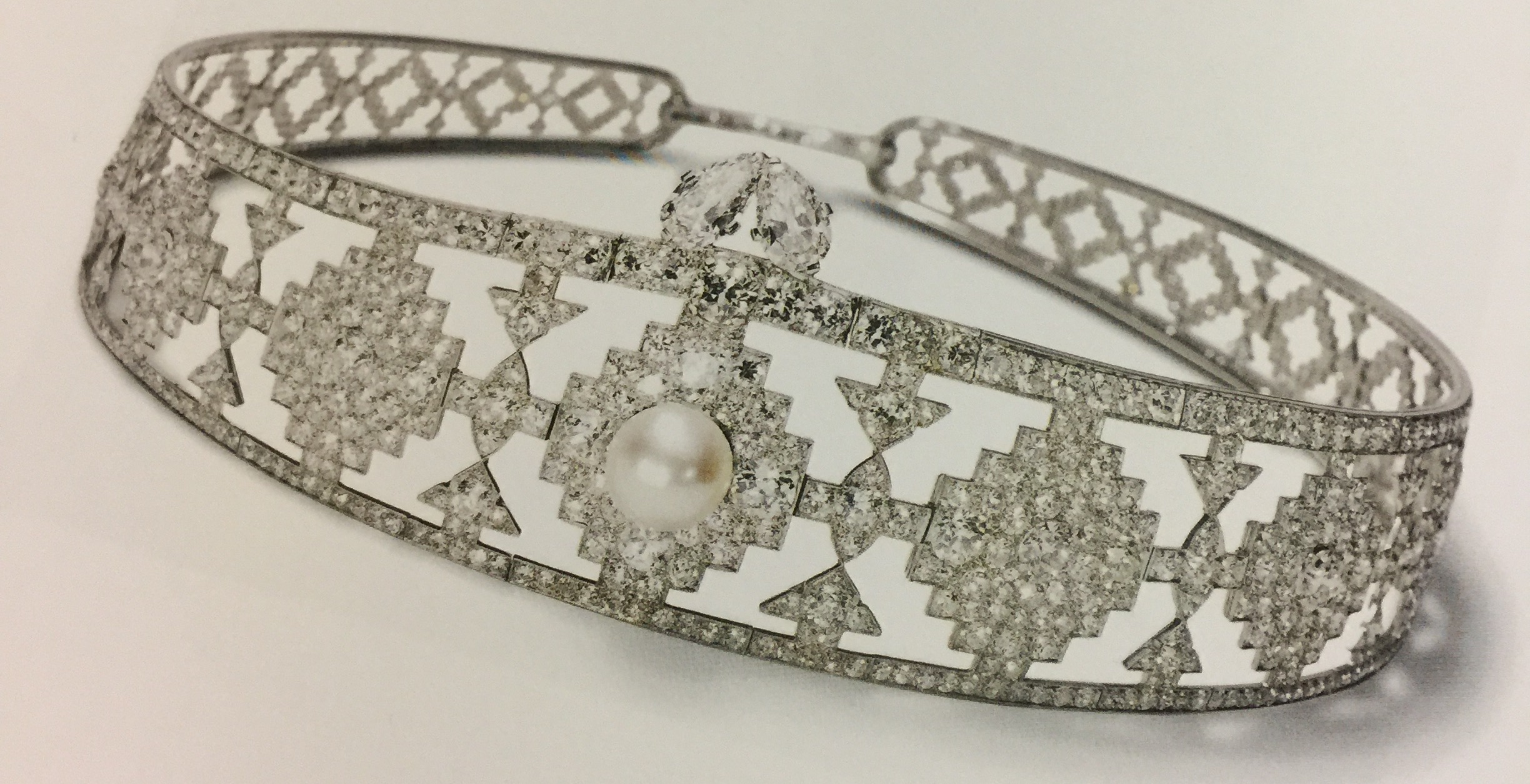
Other important pieces featured:
Two Cartier pieces owned by Linda Porter, wife of composer Cole Porter, including a colorful “Tutti Frutti” bracelet and a 1926 belt buckle featuring a scarab motif inspired by the 1922 discovery of King Tut’s tomb
- Cartier Scarab Belt Buckle Brooch, 1926; Cartier (Paris, France); Owned by Linda (Mrs. Cole) Porter Photo: Marian Gerard, Cartier Collection © Cartier
- Linda Porter’s Cartier Tutti Fruitti Bracelet ©Cartier Collection @Cartier
A close up of carved jade,sapphire and diamond Cartier bracelet owned by Mona von Bismark

A geometric Boucheron bracelet shown at the 1925 Paris exposition

Boucheron (Paris, France); Siegelson, New York; Photo: Siegelson, New York
Tiffany & Co. necklace with a skyscraper motif, circa 1930-35
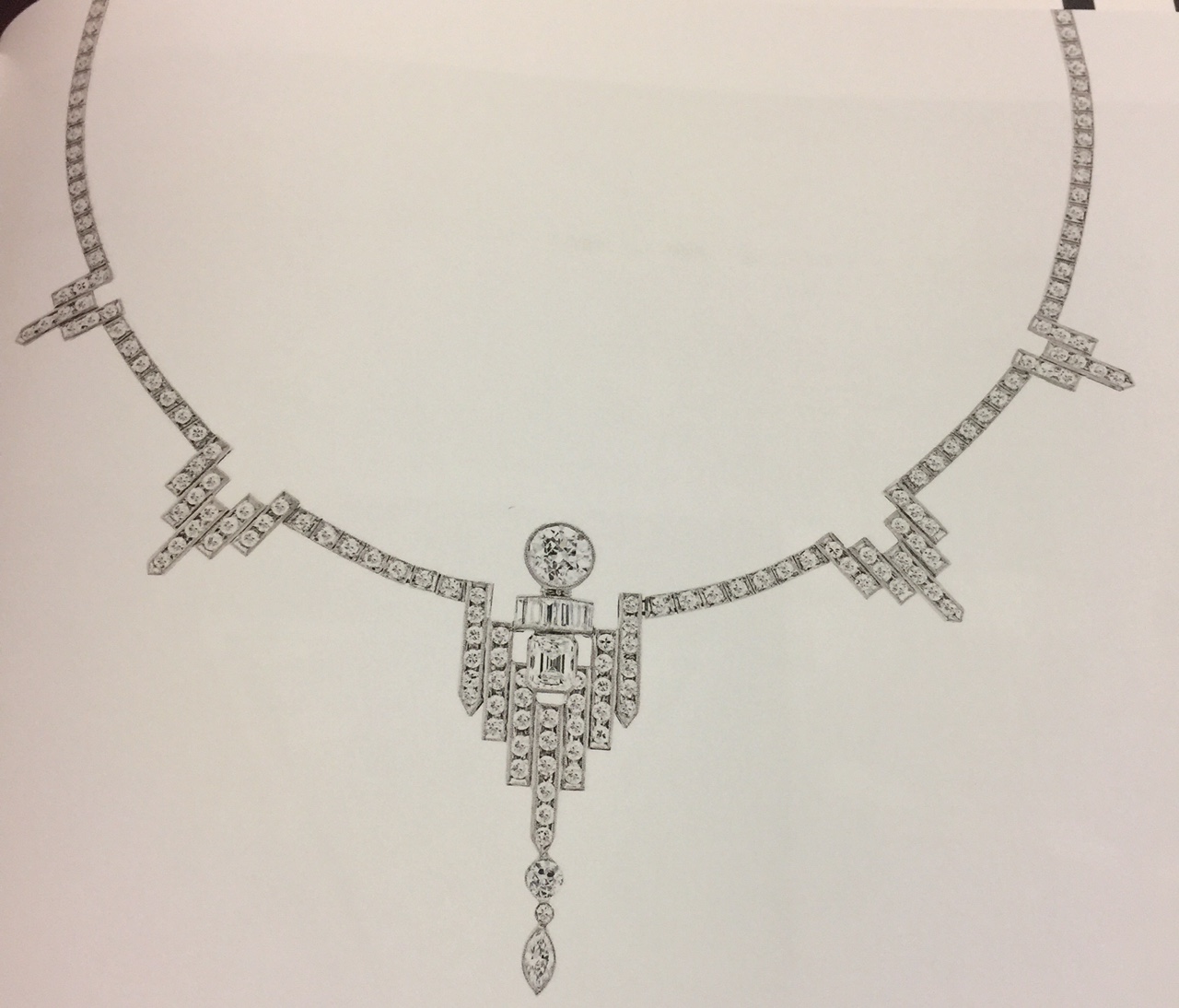
There is an accompanying catalog of the same name as the exhibit, which can be found in the Cooper Hewitt’s gift shop or on Amazon.com for those of you who live out of town and can’t make it in person and for those who have seen the exhibit and want to revisit an overview of it when it leaves on August 20th.
Similar Stories
Rings Around The World–a new exhibit and the first in our series of diverse stories on rings
Multi-talented women jewelry pioneers of the 20th Century
10 IDEAS THAT SHINE FOR 2017
The Ring in the Film Rules Don’t Apply goes from Screen to Street
Neil Lane: Collecting Legendary Jewels and Dressing Hollywood Legends

